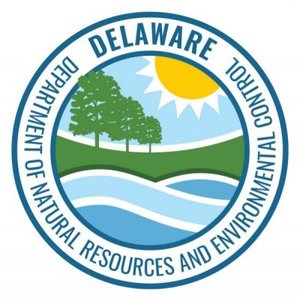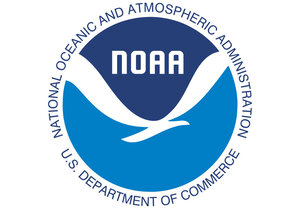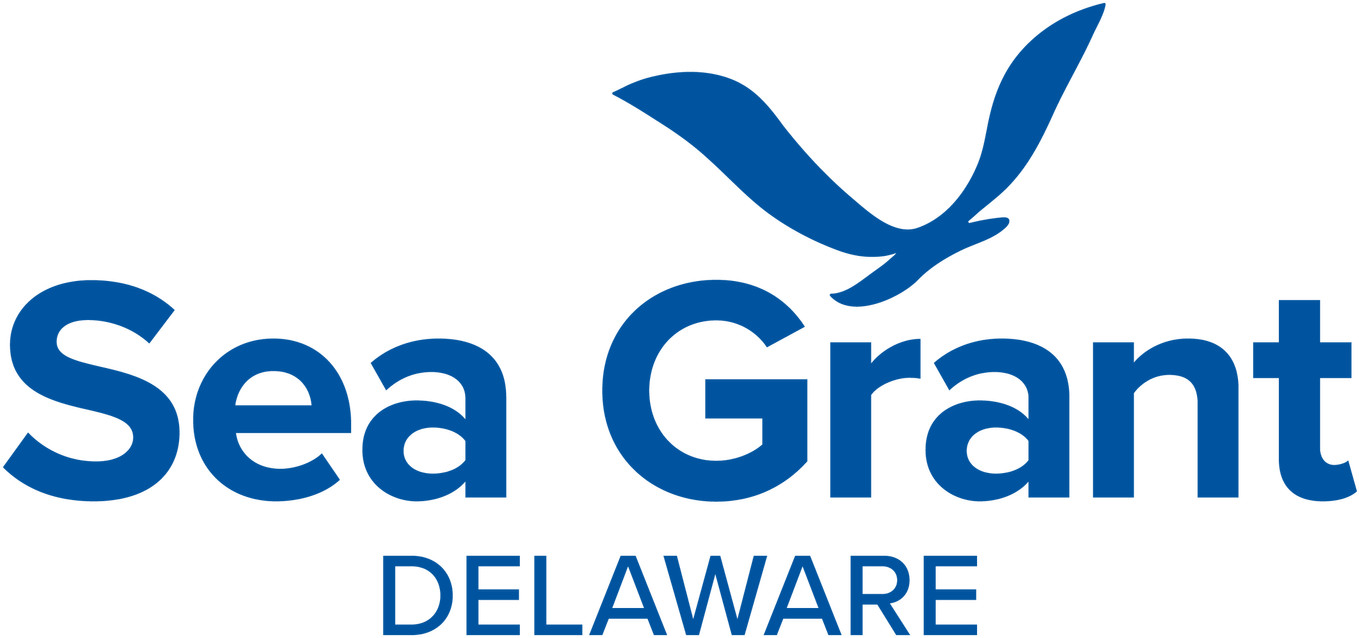
Derelict Crab Pots
Trap Trackers Program: Investigating lost crab pots of the Delaware Inland Bays
Ghost crab pots are lost commercial-style traps no longer attached to buoys. In the Delaware Inland Bays, a recreational only blue crab fishery, they litter the seafloor, damage boat propellers, and trap marine life—posing both environmental and navigational risks.
With funding from the National TRAP Program, Delaware Sea Grant and the CSHEL lab are collaborating with state and local partners and volunteers to not only remove derelict crab pots from Delaware’s Inland Bays, but to collect information on locally-relevant impacts.

Crab pot roundup event
Our next event is on September 23 & 24, 2025 and will be out of Warwick Park in Millsboro, Delaware focusing on the Indian River and upper Peppers Creek. There are multiple volunteer and boater roles that are needed.
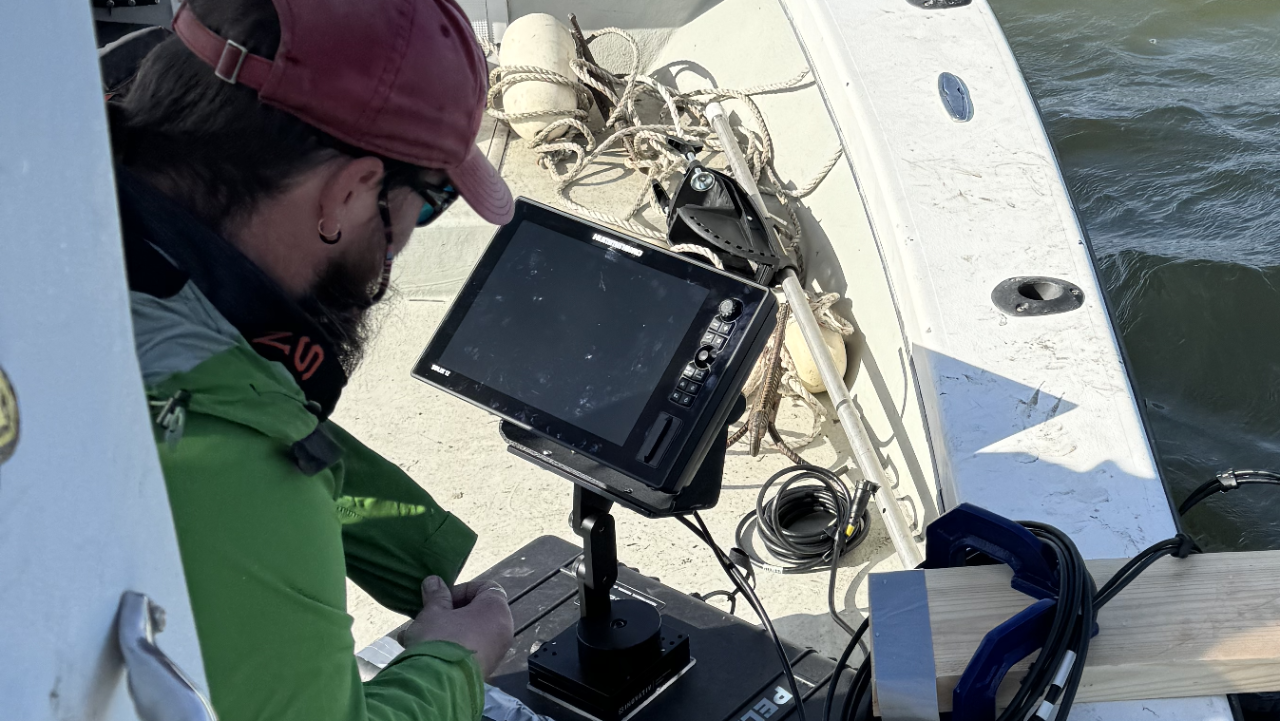
Habitat mappers needed!
Own a boat and want to help locate derelict crab pots, but don’t want to get your hands dirty? Join this low-effort volunteer opportunity—borrow a Mobile Mapping Unit and view our training videos to collect side-scan sonar data and support the cause.
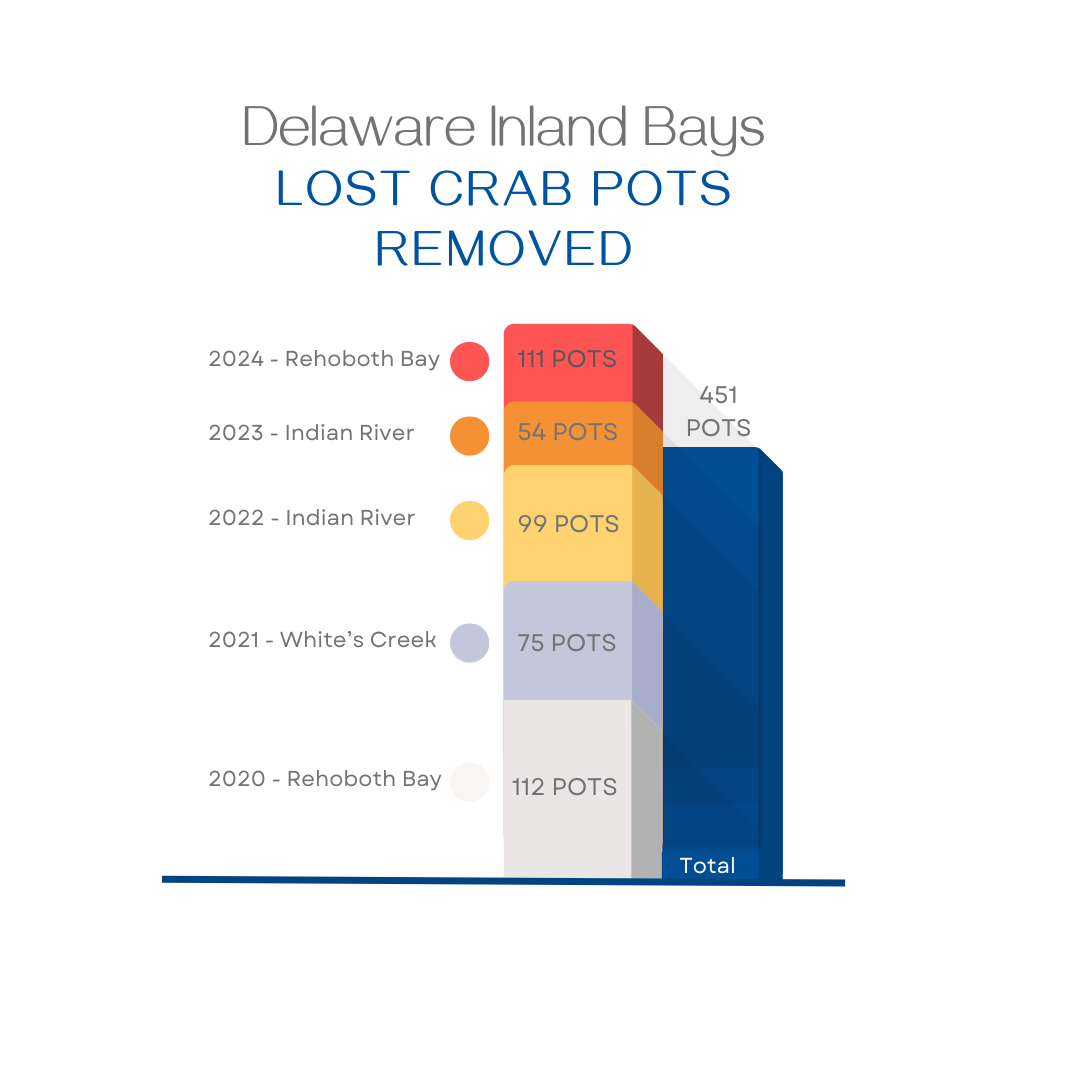
How are crab pots removed?
Our team focuses on finding derelict crab pots that have become detached from their marker buoys using consumer-grade side-imaging fish-finders. We then work with volunteers to remove this marine litter using grappling hooks.
Volunteers that bring and crew their own boats are trained to document pot status and instantaneous catch on board.
Common species encountered in the pots are diamondback terrapins, blue crabs, and oyster toadfish. Pots are then transported to shore, where they are cleaned, weighed, and sorted for various recycled uses.
Removed a Derelict Crab Pot? Your Data Matters!
Whether you’ve pulled up pots during a beach walk, kayak trip, fishing outing, low-tide search, or with side-scan sonar—tell us about it! Your data helps shape cleanup efforts, protect wildlife, and inform local and national research.
Volunteer Incentive! Remove 10+ lost pots or traps and submit data and photos by May 1, 2026 for a chance to win a $100 gift card.
Note: This form is not for reporting gear still in the water—only for documenting pots or traps after removal. Lost pots are considered those who do not still have a buoy or owner identification attached. For questions, contact Brittany Haywood at haywoobl@udel.edu.
Delaware Sea Grant Reduces Impacts of Derelict Crab Pots: youtube.com/watch?v=xzeKdpnl40c
Learn more about the program
Watch the video to discover the impact of derelict, or lost and abandoned, crab pots on Delaware’s Inland Bays and learn how Delaware Sea Grant is collaborating with the community to tackle this pressing environmental issue.
Further reading:
2019 Recreational Crab Pot Abandonment Report
2021-2020 Recreational Crab Pot Abandonment Report
Derelict Crab Pots in Delaware’s Recreational Blue Crab Fishery
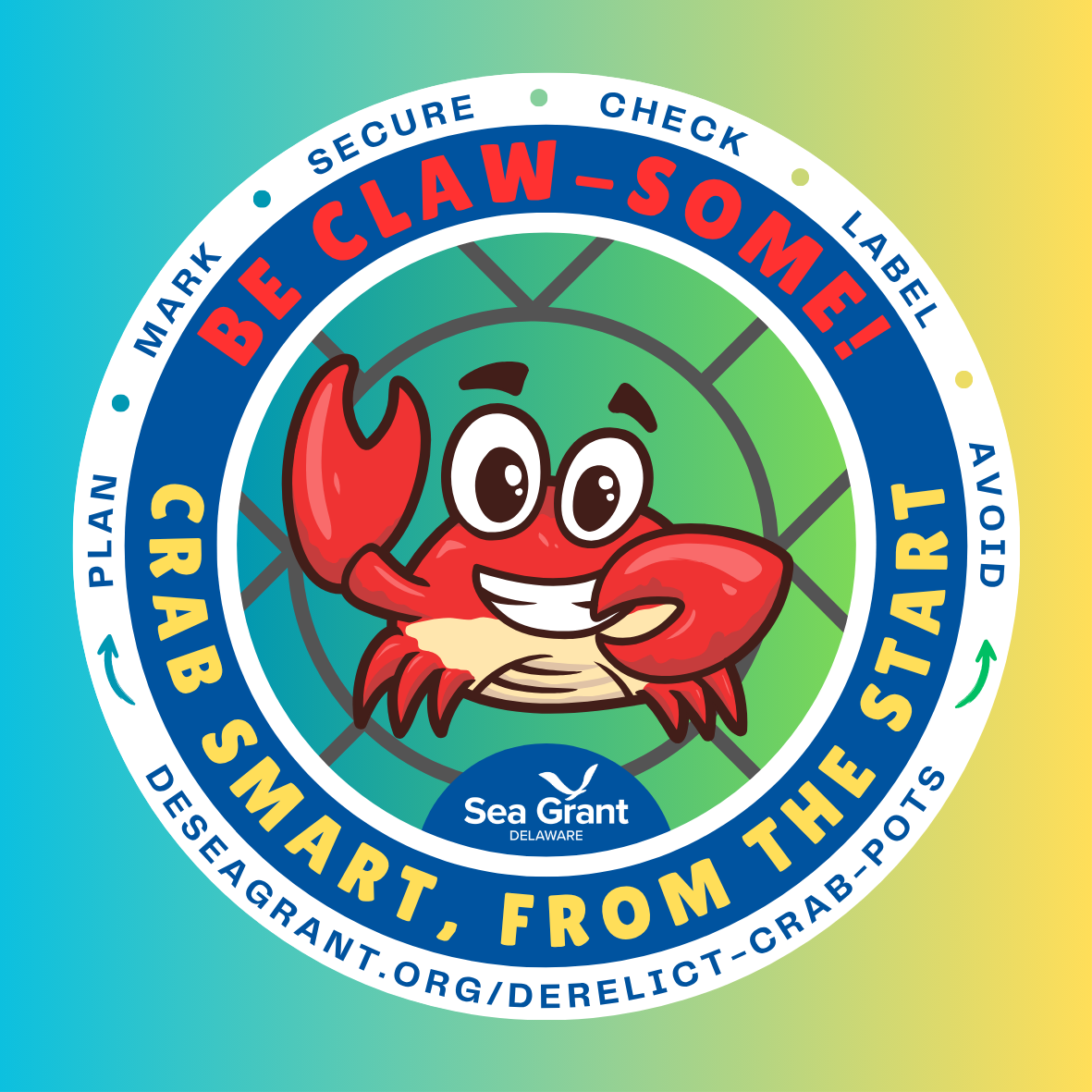
Crab Smart, from the Start
Crabbing should be fun, safe, and sustainable. DESG’s Crab Smart, from the Start initiative helps recreational crabbers learn how to crab responsibly from the beginning. View the Crab Smart, from the Start Flyer here.
We offer free Crab Trap Check events for communities and organizations. These events provide tips on crabbing, explain trap types and gear, and include hands-on checks of commercial-style pots. Missing parts can be replaced on the spot to help keep traps legal and prevent marine debris. Watch DNREC’s Crab Confidently video for a quick look at the tips and gear checks we cover during our events.
Remember, terrapin excluders—also called Bycatch Reduction Devices (BRDs)—are required on all funnel openings in recreational crab pots. Learn more about BRDs and how to install them in your gear.
Our partners
Delaware Sea Grant coordinated this project with financial, logistical, and personnel support from the University of Delaware, DNREC, and the National Oceanic and Atmospheric Administration (NOAA). DESG would also like to acknowledge the support of Art Trembanis and the Coastal Sediments, Hydrodynamics and Engineering Laboratory (CSHEL).

